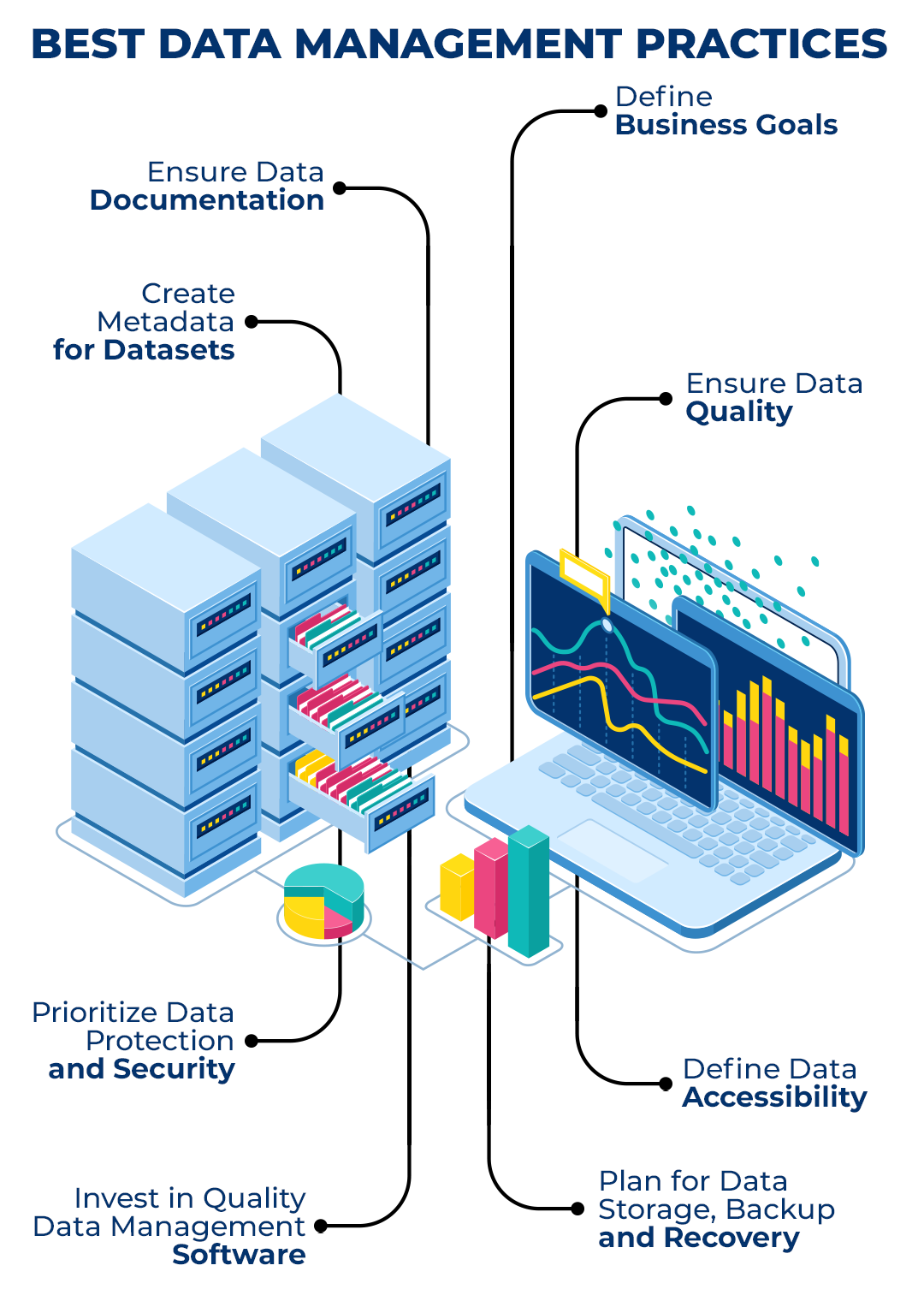Data is one of the most valuable asset for every organization in the modern digital era. However, organizations are finding it challenging to effectively manage and use the enormous, complex data sets available, with the growth of Big Data over the last couple of years.
Enterprises need sufficient data management to store, manage, secure, access, and share data. Well-managed data enables better analytics and helps the organization make intelligent business decisions for future growth.
Why is data management crucial?
Enterprises have been following hybrid storage platforms that include on-premise & cloud for storing data. Users are perplexed by various issues while dealing with the data, including where it is located, how to get it, whether it is accurate or dependable, and ultimately, how to use it to generate insights.
If the above issues are not handled effectively, businesses may be exposed to unnecessary risks and challenges. Effective Data management ensures that the data is acquired, validated, stored, and protected in a standardized way. Enterprises that use the best data management techniques benefit from efficient data utilization and profitable business outcomes.
We have outlined some of the best data management practices that enterprises can put into action right away.

1.Define Business Goals
Outlining the business goals might look basic and straightforward, but very few organizations do it rightly. Defining and aligning with the business goals can help them tremendously decide “what to focus” and “what not to focus on”. Thus enterprises can store only the data that matters to the business and eliminate unwanted data collection and storage overheads.
2.Ensure Data Documentation
The purpose of data documentation is to provide users with the descriptive information about the data being used. This would be highly useful in a collaborative scenario, where multiple users are accessing specific data. A well-documented data should be easily identifiable, understandable, and usable for users in the future. Documentation of data includes essential information such as:
> Motive of data collection
> Data collection technique
> Data file structure
> Data manipulation, if any
> Data confidentiality, access & use conditions
There are a variety of data documentation formats. Some of the most familiar formats are Readme Files , Data Dictionaries & Codebooks
3.Create Metadata for Datasets:
To put it simply, Metadata is data that narrates other data. Metadata plays a vital role in indexing the data, which makes it much easier for users to retrieve specific information.
It comprises information about the creator, context, modifications, access, and much more. It can also help users understand a data lineage and map the relationships between relevant information. Metadata information can benefit enterprises in data governance and data analysis. Data administrators can select among the several metadata types depending on the data’s purpose. While creating Metadata, Standardization should be followed to ensure consistency. DDI, Dublin Core, and MODS are some of the most well-known Metadata standards.
4.Ensure Data Quality:
Getting rid of data crisis is vital, since low-quality data complicates gathering actionable and reliable insights and hinders enterprises in achieving their goals. Data administrators should ensure that the collected data remains clean, accurate, relevant, valid, and reliable. Maintaining data quality is more of an operational activity that prevails right from data collection to data analysis. Data cleansing and Data profiling are the two primary techniques that help enterprises maintain data quality.
And here are six metrics used to evaluate the quality of the data:
- Accuracy:
How accurately the data obtained resembles or reflects the real-world event or object. - Completeness:
To what extent does the data fulfill the expected comprehensiveness, and whether it is enough to obtain meaningful conclusions. - Consistency:
If the same datasets have been stored in different systems across the enterprise, they should match each other without conflicts. - Conformity:
It means whether data complies with the required data definition standards, such as size, data type & file formats. - Integrity:
Refers to the Validity of data relationships across the organization and ensures that all data sets can be traced and connected to other data. - Timeliness:
Refers to whether required information is readily available whenever expected and needed.
5.Prioritize Data Protection and Security:
Data security is indeed one of the crucial aspects of data management. Organizations can encompass data security strategies to protect data from unauthorized access, insider threats, and cyber thefts. An IT audit would help enterprises to understand associated cyber-risks. This would also allow them to know the business impact and devise an appropriate strategy that ensures data security and privacy.
Enterprises can leverage cybersecurity assets like data firewalls, endpoint security, data encryption, UAM (User Access Management), and DLP (Data Loss Prevention) to strengthen their cybersecurity posture. There are a lot of operational activities like creating user policies, device policies & disaster recovery plans that enterprises can implement to add more value to data privacy. Companies need to educate their employees and users to understand the importance of data security and encourage them to adopt best practices.
6.Plan for Data Storage, Backup and Recovery:
There are numerous storage solutions for enterprises, like network storage, On-premise servers, and cloud storage to opt for; each has its own characteristics. Enterprises must evaluate available storage options and pick one that aligns well with their business goals & compliances.
A comprehensive data backup and recovery plan must be in place for any organization to ensure business continuity amidst uncertain scenarios like system failure, cyber-attacks, and natural calamities. The 3-2-1 backup strategy: 3 copies of data (1 primary & 2 backups) are stored using 2 types of storage methods; and 1 stored offsite; backup encryption and DRaaS are some of the best practices for data backup and recovery.
Data administrators are recommended to perform test drills often to identify shortcomings and innovate their backup and recovery strategy.
7.Define Data Accessibility:
Enterprises have to strike the ideal balance between security and accessibility when it comes to data accessibility. Users can be given the least privilege – where they are given the least amount of permission required to perform their duty. Enterprises can create different groups based on job roles and add permissions accordingly for users to log in and access data. Organizations can also classify sensitive data and implement tag-based access policies. They can use tags to control the access & monitor data resources. A strategic data governance system integrated with the existing business process can help data administrators to implement data access policies seamlessly and effectively.
8.Invest in quality data management software:
Data Management Software (DMS) can seamlessly provide practical information for business operations by extracting, cleansing, transforming, and integrating data while retaining data quality. Enterprises need a suitable DMS to have extended control over their data across multiple resources. A few crucial factors must be evaluated when investing in a DMS include, an easy-to-use interface, data consolidation feature, integration capabilities, automation, and scalability options.
If you feel our suggestions will help you improve your data management approach, feel free to share them with your network. And if you’d like to add more techniques or best practices as suggestions, please leave a comment. We’d love to know.






